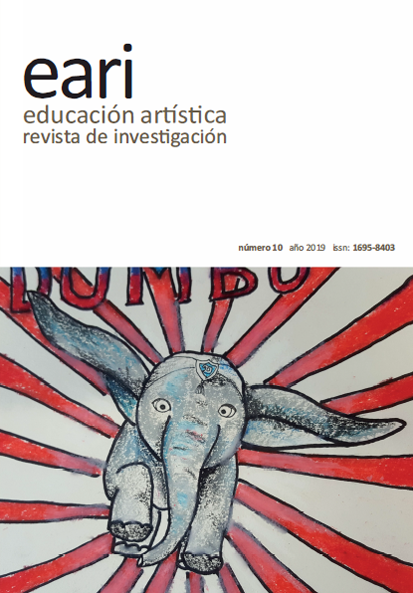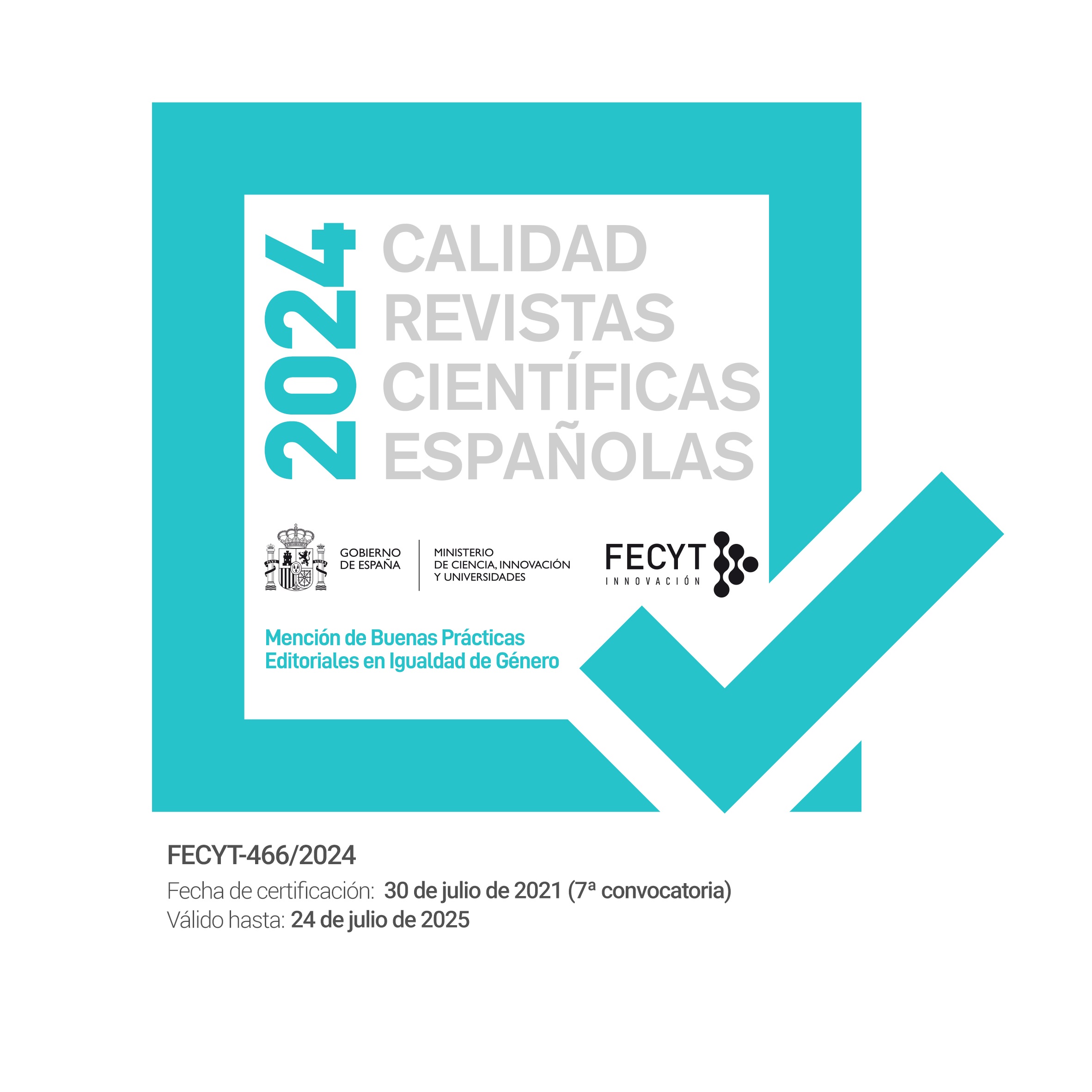Museums and gender: a pending subject
DOI:
https://doi.org/10.7203/eari.10.14430Keywords:
Museums, gender, women, representation, feminism Abstract
Abstract
This article tries to approach the representative reality of women both in the history of art and in the setting of museum institutions, from a gender perspective. We will embark on a journey through history, wandering through the core that structures the cultural sphere, observing the foundations of the androcentric discourse that prevails, even today, in how museums show themselves. We will go through the history of art, contemplating the multiple and diverse representations that the female figure has had throughout history, as well as the creative artist, who has shaped the image of women according to his criteria, imposing stereotypes and roles that have been repeated over the centuries. We will go through the theories from a critical position in feminist terms, to discover the absence of artists in art and in the context of cultural institutions. We will review the actions and new perspectives that have been proposed over the last few years, to question the absence of female figures as active and creative subjects, in order to achieve the inclusion of women in the artistic and cultural sphere and also, to create new cognitive maps from the equality of opportunities and the recovery of the memory of the artists, that have been made invisible in our history.
 Downloads
Downloads
 References
References
Alario, T. (1995). La mujer creada: lo femenino en el arte occidental. Arte, Individuo y Sociedad, 7, 45-51. Recuperado de http://revistas.ucm.es/index.php/ARIS/article/view/ARIS9595110045A
Alario, T (2009). Sobre museos y mujeres. Un nuevo dialogo. Her&mus, 3, 21-26. Recuperado de http://www5.uva.es/catedraestudiosgenero/IMG/pdf/teresa_alario._museos_y_mujeres.pdf
Albero Verdú, S. A., Arriaga, A. (2018). Educación con Perspectiva de Género en Museos Españoles. Enfoques y Discursos. Multidisciplinary Journal of Gender Studies, 7(1), 1531-1555. doi: 10.4471/generos.2018.2921
Althusser, I. (1977). Ideología y aparatos ideológicos del Estado. En I. Althusser, Posiciones. Barcelona: Anagrama.
Beauvoir, S. (1999). El segundo sexo. Madrid: Cátedra.
Berger, J. (2000). Modos de Ver. Barcelona: Gustavo Gili.
Bernárdez Rodal, A. (2012). Sobre públicos, museos y feminismo. En M. López F. Cao. Fernández Valencia, A. Bernárdez Rodal, A. (eds.), El protagonismo de las mujeres en los museos (pp. 53-63). Madrid: Ed. Fundamentos. Recuperado de http://eprints.ucm.es/17564/1/articulo_museos.pdf
Bolaños, M. (2008). Historia de los museos en España. Gijón: Ediciones Trea.
Chadwick, W. (1990). Las mujeres y el arte. En W. Chadwick, Women, Art and Society (pp.257-266). Michigan: Thames & Hudson. Recuperado de http://www.debatefeminista.cieg.unam.mx/wp-content/uploads/2016/03/articulos/007_18.pdf
García Sandoval, J., Gregorio Navarro, C. (2013a) Mirar con una nueva mirada y retomando las historias del tiempo. Mujer y Museo en España ICOM CE Digital. Museos, género y sexualidad, 8, 24. Recuperado de http://www.icom-ce.org/revista-icom-ce-digital/
García Sandoval, J. Gregorio Navarro, C. (2013b). Imagen y lenguaje. Hacia la inclusión de la figura de la mujer en Museos y Patrimonio. ICOM CE Digital. Museos, género y sexualidad, 8, 54. Recuperado de http://www.icom-ce.org/revista-icom-ce-digital
Haraway, D. (1995). Ciencia, Cyborgs y mujeres: La reinvención de la naturaleza. Madrid: Cátedra.
Ley Orgánica 3/2007, de 22 de marzo, para la igualdad efectiva de mujeres y hombres. Recuperado de https://www.boe.es/buscar/pdf/2007/BOE-A-2007-6115-consolidado.pdf
López F. Cao, M. (2011). Mulier me fecit: Hacia un análisis feminista del arte y su educación. Madrid: Horas y horas.
López F. Cao, M. (2013). La función de los museos, preservar el patrimonio ¿masculino? ICOM CE Digital. Museos, género y sexualidad, 8, 16. Recuperado de http://www.icom-ce.org/revista-icom-ce-digital/
Magaña, L. (2014). El feminismo dentro de la representación de la mujer en la historia del arte: una mirada a los antecedentes de los diferentes estereotipos del cuerpo femenino dentro de la obra de arte. El artista, 11, 189-202. Recuperado de http://www.redalyc.org/articulo.oa?id=87432695011
Mhcat.cat (2018). Manifest del grup de treball ‘Museus i Gènere’ de la Xarxa de Museus d’Història i Monuments de Catalunya. Recuperado de http://www.mhcat.cat/descobreix_catalunya/manifestos_i_comunicats/manifest_del_grup_de_treball_museus_i_genere_de_la_xarxa_de_museus_d_historia_i_monuments_de_catalunya
Pascual, J. F. (2007). Una aproximación a la imagen de la mujer en el arte español. Ogigia. Revista electrónica de estudios hispánicos, 1, 75-89. Recuperado de http://www.ogigia.es/OGIGIA1_files/PASCUAL.pdf
Perrot, M. (1989). La mujer en el discurso europeo del siglo XIX. En Mujeres y hombres en la formación del pensamiento occidental. Actas de las VII Jornadas de Investigación Interdisciplinaria. Madrid: Universidad Autónoma de Madrid
Prados, L. Izquierdo, I., López, C. (2013) La discriminación de la mujer: los orígenes del problema. La función social y educativa de los museos arqueológicos en la lucha contra la violencia de género. ICOM CE Digital. Museos, género y sexualidad, 8, 110. Recuperado de http://www.icom-ce.org/revista-icom-ce-digital/
Pollock, G. (1996). Inscripciones de lo femenino. En A. M., Guash (ed.), Los manifiestos del arte postmoderno (pp.322-346). Madrid: Akal.
Sardá, T. (2006). Mujer-Artista, Objeto-Sujeto: La problemática de la representación femenina. (Tesis de maestría) Universidad de Chile, Chile. Recuperado de http://repositorio.uchile.cl/tesis/uchile/2006/sarda_t/sources/sarda_t.pdf
Serrano de Haro, A. (2007). Imágenes de lo femenino en el arte: atisbos y atavismos. Polis, 17. doi:10.4000/polis.4314
UNESCO (2015). Recomendación relativa a la protección y promoción de los museos y colecciones, su diversidad y su función en la sociedad. Recuperado de http://portal.unesco.org/es/ev.php-URL_ID=49357&URL_DO=DO_TOPIC&URL_SECTION=201.html
Vadillo, M. (2009). La deconstrucción del cuerpo femenino: El no lugar en el arte. En I. Vázquez (Presidencia). Investigación y género, avance en las distintas áreas de conocimiento: I Congreso Universitario Andaluz Investigación y Género. Sevilla: Universidad de Sevilla. Recuperado de https://idus.us.es/xmlui/handle/11441/39826
Woolf, V. (2003). Un habitación propia. Madrid: Alianza.
Downloads
Published
How to Cite
-
Abstract2029
-
PDF (Español)1427
Issue
Section
License
![]()
Educación artística: revista de investigación (EARI) retains the proprietary rights (copyright) of published works, and favors and allows the reuse of the same under the license Creative Commons Attribution-Noncommercial Use 4.0 International License (CC-BY-NC 4.0), which allows third parties to use the published material whenever the authorship of the work and the source of publication is mentioned (journal, publisher and URL of the work), and it is used for non-commercial purposes.
Authors are encouraged to disseminate their work after it has been published, through the internet (for example, in institutional archives online or on its website) which can generate interesting exchanges and increase work appointments.








